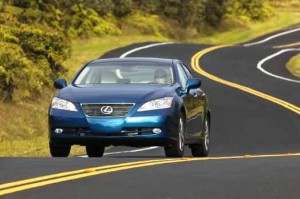Toyota Motor Co. has confirmed it will replace emergency trunk releases on 700,000 vehicles because the devices – designed to allow someone trapped in a trunk to escape – can break off in use.
The move will be labeled a “service campaign,” rather than a recall, however, a move that will spare the automaker from adding to its already hefty toll of vehicle callbacks this year. Toyota is in a dubious race with Japanese rival Honda to have the most vehicles recalled in 2012.
Emergency trunk releases began to be installed by automakers following numerous reports of children – and some adults – dying when they became inadvertently trapped inside closed trunks, a situation exacerbated in extreme weather conditions.
But Consumer Reports magazine issued a warning that the releases used on Lexus products had a tendency to break. “When the lever is pulled straight or toward the passenger side of the vehicle, it worked fine. However, when pulled toward the driver’s side, the plastic surround acts as a fulcrum and snaps the emergency release handle off easily, preventing the trunk from opening,” the magazine reported.
The warning prompted the National Highway Traffic Safety Administration to begin looking into the potential problem – though NHTSA had not ordered a safety recall.
Toyota officials still defend the mechanism in use on Lexus vehicles, contending the clearly labeled emergency handles only break when pulled the wrong way. Critics note that expecting someone trapped in a trunk to read and understand such instructions without panicking may be asking a little too much – especially considering the most common crisis involves a young child locked in a trunk.
The vehicles covered by the “service action” include the 2007-13 Lexus ES, 2006-12 Lexus IS, and 2013 Lexus GS models.
Toyota plans to develop the proper procedures and build its stock of replacement parts before notifying owners to come in for repairs. That will almost certainly not occur until early in 2013. One of the dangers of declaring this a “service action,” rather than a recall, however, is that such lower-tier safety campaigns tend to also generate a lower level of customer response.
Toyota has become more aggressive at addressing safety-related issues since it was slammed for its lax response to issues involved in the so-called unintended acceleration problem of 2009 and 2010. That eventually led to the recall of millions of vehicles and numerous government fines.
The maker had the single highest number of individual vehicles recalled in the U.S. market in 2010 but was surpassed by Honda the following year due to a late December callback by the smaller maker. Both are in contention to achieve that dubious honor again for 2012.
In October, Toyota Recalled back 7.43 million vehicles worldwide – its largest single service action ever – due to short-circuiting window switches. The problem, which could lead to vehicle fires, involved 2.5 million vehicles sold in the U.S.
But Honda today was forced by NHTSA to recall more than 800,000 vehicles because potentially defective shift interlocks could allow the vehicles to roll away when keys are removed without the gearshift being in Park.
All told, Honda has recalled roughly 3 million vehicles during the fourth quarter of 2012 alone, compared to 3.8 million for all of 2011.
(For more on the latest Honda recall, Click Here.)

